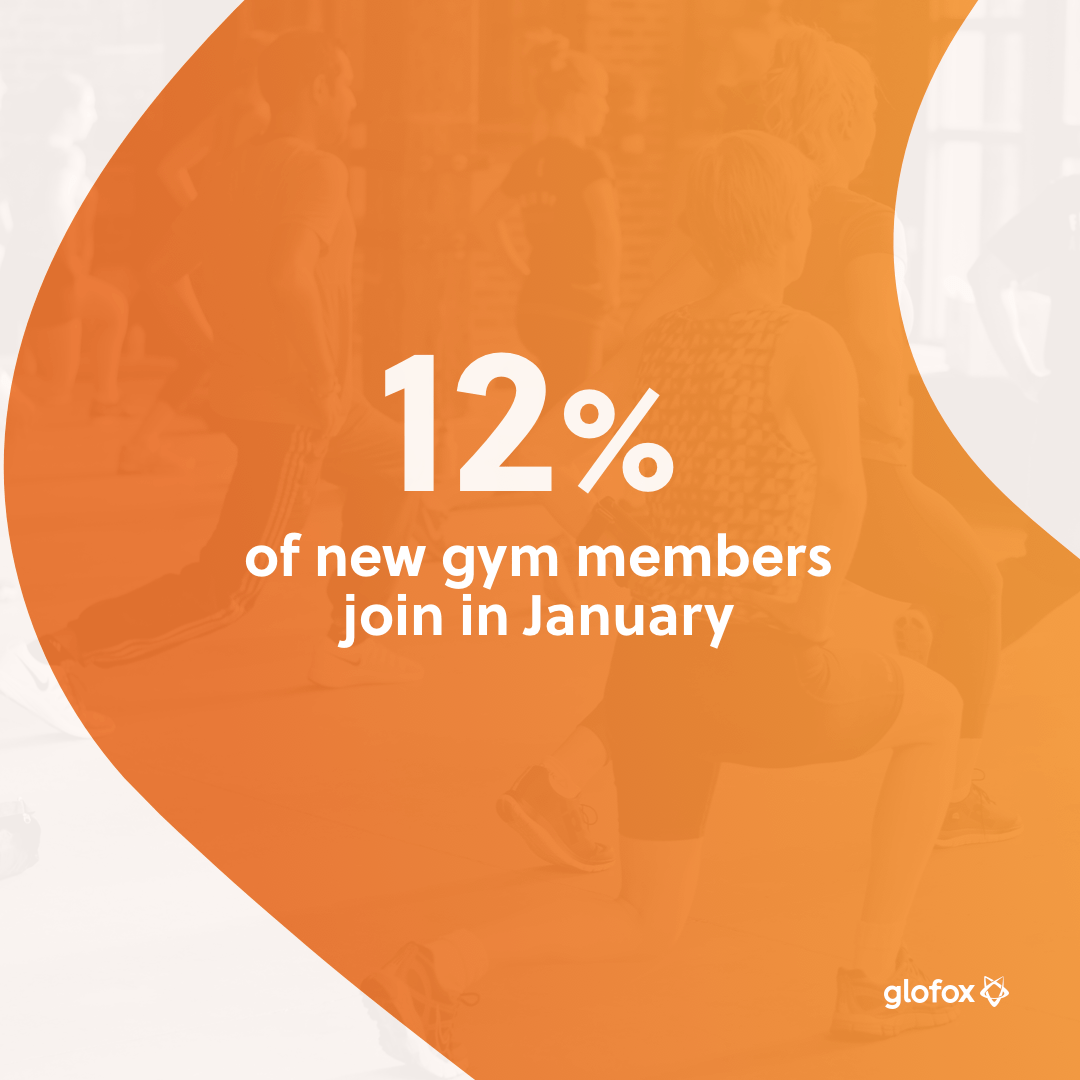This is your go-to guide for fitness statistics 2020. There are many aspects to running a fitness business and knowing the relevant stats is crucial for planning and growth.
Want to change your services, equipment, or classes?
You need to know what gym members want.
Confused why more leads aren’t converting?
You need to know what could be holding you back.
Data and insights can help you assess the best way forward across multiple areas of your business strategy. We’ve broken the statistics you need to know for 2020 into 4 key areas, so you can easily find what you need. We’ll summarize with 2020’s predicted industry trends, according to the ACSMs latest survey. Before we dive in, we’ll take a look at the industry as a whole. Skip ahead to relevant sections:
- An Overview of the Fitness Industry
- 40 Crucial Statistics to Help Your Fitness Business Grow in 2020
- Management
- Sales
- Retention
- Customer Expectations and the Member Experience
- Fitness Trend Predictions 2020
An Overview of the Fitness Industry
This overview comes from The IHRSA’s 2018 global report and IBIS World’s 2019 reports of gym, health and fitness clubs and fitness franchises in the US.
How big is the fitness industry?
- There are currently 111,055 fitness businesses in the US and 9,997 fitness franchises.
- The US fitness industry totaled $36billion in revenue in 2019, with franchises accounting for $4billion.
- Worldwide, the IHRSA estimates the total fitness industry revenue at $94bn in 2018, an increase from $87.2bn in 2017.
Is the industry growing?
- Between 2014-2019 the fitness industry has seen an annual growth of 3.7%.
- Franchises have grown at almost double the rate at 6.3%.
If it continues in this direction, the fitness industry is on track to reach over $105 billion in 2020. Running your fitness business successfully in 2020 relies on four key areas that overlap:
Your staff and sales strategy. You need a top-quality team that’s passionate about your goals and aligned with your business. They’re excited to turn up to work every day and engage with members and they’ve mastered the playbook of selling gym memberships.
Your member experience and retention. Your members need to have an exceptional experience to keep them loyal and increase retention.
40 Crucial Statistics to Help Your Fitness Business Grow
Management
1. 69% of employees are more likely to stay for 3 years if they experience great onboarding.
2. 70% of high-retention-risk employees say they’ll be forced to leave their organization to advance their careers.
3. 93% of employees would stay at a company longer if it invested in their careers.
4. Engaged employees show up with purpose, passion, and energy. Highly engaged teams show a 21% greater profitability.
5. Happy team members are up to 20% more productive at work.
6. Those who are unhappy take 15 more sick days each year than the average employee.
7. Only 40% of employees know the goals, strategies, and tactics and the business.
Key takeaways:
- Make sure your employees know they have a future with you. Check-in with the team from time to time and ask for feedback. Implement quarterly appraisals to talk through progression options, or further certification.
- Host regular staff events to keep your team happy and engaged. It can be simple activities, like everybody taking a class together and grabbing dinner afterward.
Sales
8. More than 12% of new gym members join in January.
9. Nine out of 10 buying decisions are made with peer recommendations.
10. Only 2% of sales occur when people meet for the first time.
11. 83% of people would be happy to provide a referral after a positive experience…
12. But salespeople don’t ask! Only 29% end up actually giving a referral.
13. 44% of the time, sales reps give up after just one or two follow-ups. But most leads will close after nine or more.
14. Only 17% of salespeople think they’re pushy… compared to a staggering 50% of prospects.
15. Only 24% of sales emails are opened.
16. Emails with one to three questions are 50% more likely to get replies than emails no questions.
Key takeaways:
- Follow-ups are crucial. You and your team need to keep them friendly and helpful, not pushy! Ask questions during your pitch and follow up so your prospect knows that you have their best interests at heart.
- Ask for referrals. Simply put: if you don’t ask, you won’t get.
Retention
17. 38% left a health club because it was too expensive.
18. 23% quit the gym because they’re not using it.
19. Gym-only members are 56% more likely to leave compared to members who take part in group fitness.
20. 8% of male gym members quit within the first year compared to 14% of women.
21. 6.3% of Americans have gym memberships they don’t use.
22. 50% of all new gym members quit going within 6 months.
23. 80% of January gym joiners quit within 5 months.
24. A 5% increase in customer retention can increase company revenue by 25-95%.
25. 73% of people believe loyalty programs should be used for brands to show loyalty to customers.
26. Engaged customers are 5X more likely to stay loyal to a brand.
27. 71% of loyalty program members say membership is a meaningful part of their relationship with a brand.
Key takeaways:
- Engage your members to foster loyalty. Whether it’s building a community on social media or monthly newsletters with helpful fitness tips.
- Offer a referral program to make members feel valued and turn them into your brand ambassadors.
Customer Expectations and the Member Experience
28. An engaging community is currently one of the top reasons for people going to the gym.
29. 56% of current gym members don’t like New Year’s resolutioners.
30. 86% of consumers are willing to pay up to 25% more for a better customer experience.
31. 75% of people would return to a company with excellent service.
32. 73% of brands that provide an above-average customer experience perform better financially than their competitors.
33. 49% of customers will change brands because they feel under-appreciated, making it the number one reason people switch.
34. 1 out of 26 unhappy customers complain. The rest will keep quiet and leave.
35. Millennials will pay up to 21% more than any other generation on great customer care.
36. 65% of businesses say improving their data analysis is very important for delivering better customer experience.
37. 63% of consumers now expect personalization as a standard of service.
38. 54% are willing to share personal information if it will be used to create a personalized experience.
39. 77% of customers have a more favorable view of brands that ask for and accept customer feedback.
40. 68% of customers have a more favorable view of brands that offer or contact them with proactive customer service notifications.
Key takeaways:
- Personalization is key. Now more than ever, it’s expected as a standard of service. Your members are willing to share information so you can personalize your approach – so make the most of it.
- Create a community. It’s the number one reason people are going to the gym – and it’s what will keep them coming back.
Fitness Trend Predictions 2020
The ACSM Worldwide Survey of Fitness Trends has been reporting on the top twenty trends annually for the last 14 years. The comparison from previous years allows for accurate insights on the correlation in fitness trends and consumer habits. View the full analysis here, or read on for an overview of the key trends:
1. Wearable technology was again the number one trend – as it has been since 2016. We know that wearables are one of several tech developments that are reshaping the fitness world and its clear they’ll continue to do so in 2020.
2. High-intensity interval training comes in at number two – following a turbulent time in the rankings in recent years: Ranking at number 1 in 2014 and 2018, HIIT training dropped to number 3 in 2016 and 2017. It has remained in the top 5 between 2014 and 2020. It’s predicted that HIIT training will play a role in the development of hybrid classes in the future.
3. Group training first made the top 20 list in 2017 at number 6. It moved to number 2 in 2018 and 2019 and although it dropped one place this year – being in the top three means its a trend worth investing in.
4. Training with free weights (formerly referred to in the report as strength training) debuts at number 4 in 2020. As well as offering classes, having a dedicated space at your facility where members can train independently would add a benefit to your service.
5. Personal Training came in at number 8 in 2018 and 2019 and has risen 5 places for 2020. Its popularity is continuing to grow due to accessibility; online, at home and in gyms.
6. Exercise is Medicine is a global health initiative from health-care providers. The program includes a physical activity assessment as part of every patient visit and referring patients to fitness professionals.
7. Body Weight Training comes in at number 7 as an inexpensive way for people to exercise effectively. With examples like ConBody, it’s clear that fitness professionals are aware of the growing interest in the area and its benefits.
8. Fitness programs for older adults. With generally a higher discretionary income than other generations, this trend sees continuous growth from Baby Boomers. While different generations have different goals and needs, this is definitely an audience worth investing your efforts in for 2020.
9. Health and wellness coaching has seen significant growth since it hit the top 10 trends in 2010, rising from number 17 in 2014 to its place at number 9 for 2020.
10. Employing certified fitness professionals debuted on the list last year at number 6 and has since fallen to number 10 for 2020.
11. Exercise for weight loss has made the list since the survey began and continues to remain a priority in people’s reasons for exercise.
12. Functional fitness training focuses on using strength training to improve everyday movement. Brands such as F45 continue to attract a steady interest in the trend.
13. Outdoor activities. This trend first appeared at number 25 in 2010. The category includes examples such as organized hiking groups and group walks and is growing in popularity. Events range from being short excursions to planned weekend activities.
14. Yoga in its various forms continues to drive interest. It first appeared as a top-ten contender in 2008, fell out of the top 20 in 2009, and rocketed to number 14 in 2010. With time spent up and down the list in subsequent years, it returns to number 14 for 2020.
15. Licensure for fitness professionals. This trend first appeared in 2018 when it was ranked number 16. It fell to number 18 in 2019 and focuses on the regulation of fitness professionals such as personal trainers and exercise physiologists.
16. Lifestyle medicine debuts on the survey for the first time in 2020. This category promotes healthy behaviors as the foundation for medical care, health promotion and disease prevention. It focuses on helping people adopt and maintain healthy lifestyle behaviors, from increasing their activity levels to quitting smoking.
17. Circuit training. Survey participants highlighted that circuit training is similar to HIIT, albeit at a lower intensity. The rise of HIIT could explain circuit training’s time spent on the lower end of the list in recent years; It was at number 18 in 2016 and number 19 in 2017, improving to 17 in 2018. It dropped again last year, falling out of the top 20 at number 21 – so 2020 shows improvement.
18. Worksite health promotion and workplace well-being programs. Following the growing popularity of wellness both in and out of the workplace, corporate wellness programs are on the rise.
19. Outcome measurements. Wearable technology has likely influenced this trend; people want to see and evaluate their progress. This trend made its way into the top twenty in 2019, up from number 21 in 2018.
20. Children and exercise. This trend has made a sporadic appearance on the list in recent years. Children and exercise for the treatment and prevention of obesity first dropped out of the top twenty in 2016 and has only just made it back in for 2020. Dropping from the top 5 in every survey from 2007-2013, this shows the biggest decrease in results. Childhood obesity continues to be a major health concern in today’s world – studios and gyms around the world could find this to be an underestimated area of revenue in the future.



















